My Oracle blog has moved
I've moved these few articles to my latest, greatest blog at: http://blogs.oracle.com/alison This blog will only remain here for another few weeks before I hit delete. Please change any bookmarks to the new blog. Alison
I've moved these few articles to my latest, greatest blog at: http://blogs.oracle.com/alison This blog will only remain here for another few weeks before I hit delete. Please change any bookmarks to the new blog. Alison
It's easy to get confused as to how to specificy your Oracle database connection string, and there's a handy new feature in Oracle 10g that makes this a whole lot easier. So here's a little rundown of the three ways to connect to Oracle databases. You can use the:
The tnsnames.ora file is a client side file that maps an alias used by client programs to a database service. It is used to connect to a non-default database. Here you have to have an entry in the tnsnames.ora file, and reference the alias to that entry in your connection code.
PHP code:
oci_connect($un, $pw, 'MYDB');
tnsnames.ora entry
MYDB = (DESCRIPTION =
(ADDRESS = (PROTOCOL = TCP)
(HOST = mymachine.mydomain)(PORT = 1521))
(CONNECT_DATA =
(SERVER = DEDICATED)
(SERVICE_NAME = MYDB.AU.ORACLE.COM)) )
The full connection string does not require the use of a tnsnames.ora file. You need to enter the full connection string when you connect to the database in your code.
PHP code:
oci_connect($un, $pw,
'(DESCRIPTION=(ADDRESS=(PROTOCOL=TCP)(HOST=mymachine.mydomain)(PORT=1521))
(CONNECT_DATA=(SERVER=DEDICATED)
(SERVICE_NAME = MYDB)))');
This is one Oracle 10g feature that I use daily. As I constantly connect to so many different databases in my day, this has saved me so much time as I don't have to configure anything, just know the machine name and the database alias and I'm off.
The easy connect string does not require the use of a tnsnames.ora file, and is an abbreviated version of the full connection string. you must have the Oracle 10g client-side libraries to use the easy connect string.
PHP code:
oci_connect($un, $pw, '//mymachine.mydomain:port/MYDB');
Alison Holloway, Product Manager, Oracle Corporation
January 2006
In November 2005 I attended the PHP Conference in Frankfurt. At that conference I did a demonstration which showed how to integrate PHP Web Services using Oracle BPEL, and the Oracle JDeveloper PHP Extension. I have written up that demo for others to get an overview of what I talked about and showed to the conference attendees.
If you have PHP web services you want to integrate into a new web service, or business process, then BPEL is your answer. BPEL lets you orchestrate your disparate web services into new web services. You can even use the BPEL web services as part of another BEPL web service. The beauty of web services is that they can be in a variety of languages, so you can reuse your PHP web services and ones in other languages.
This article gives an overview of the tools you could use to create BPEL processes:
These tools help you to quickly get started creating BPEL processes to incorporate your PHP web services into new business processes.
Let's suppose you have a departmental application to approve employee leave requests. A PHP developer has written this application as a web service and managers log into the application to manage the leave requests. The employee leave request table contains a row with the identifier of 1004, which is a leave request for an employee, CJONES. You can see this leave request in the PHP web service used by department managers to approve employee leave requests.
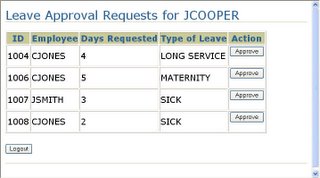
Figure 1, PHP Web Service Consumer Interface
This is a standalone application that you now want to incorporate into a new company-wide business process as a web service. You can use BPEL to do this. Let's now run through the Oracle BPEL and PHP tools.
This PHP web service was written using the Oracle JDeveloper 10g PHP Extension. This extension was written by Oracle and gives you, amongst other things, PHP code syntax highlighting, and some snippets of code that help you get started creating connections to an Oracle Database. Here's a look at the PHP Extension in action.
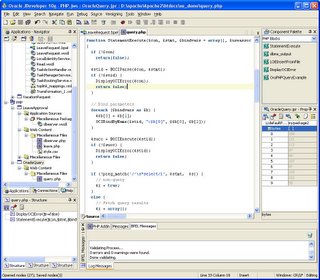
Figure 2, Oracle JDeveloper 10g PHP Extension
The code snippets shown in the Component Palette are included in the PHP Extension and enable to to quickly create database connections and run SQL statements. The Structure pane includes a list of PHP functions and their respective variables.
Although the PHP Extension doesn't give you PHP debugging, it may be useful if you want to write or edit PHP files while creating a BPEL application.
To create a BPEL process which will incorporate this PHP web service, you would use the Oracle BPEL Designer.
The Oracle BPEL Designer is another extension to Oracle JDeveloper 10g. I would suggest installing the Oracle BPEL Designer (Oracle JDeveloper 10g and the BPEL Designer Extension) first, and then add the PHP Extension. There is also an Oracle BPEL Designer extension available for Eclipse, although this doesn't include the Oracle-specific features.
Here's a look at the BPEL Designer interface.

Figure 3, Oracle BPEL Designer Interface
The BPEL Designer gives you a graphical tool to create and orchestrate BPEL processes. For example, you can click and drag in PartnerLinks (links to WSDL files for web services), User Tasks (interraction by a user), add decision making elements such as While loops, Waits, Switches, and throw errors.
The BPEL process shown here includes a Partner Link to a database adapter, called DBRead in Figure 3. This enables you to make direct calls to an Oracle Database to query and update data. This BPEL process queries the database using the leave request ID and returns the row associated with that ID. The BPEL process then manipulates the results using XSLT and XQuery functions to format the query results, and create new variables required by the process.
There is also some decision making in the process. In this case, there is a switch statement which enables different actions to be performed depending on whether the leave request is approved, denied, or an error is generated.
If the employee leave request is approved, the BPEL process will use the PHP web service, called PHPUpdateDB in Figure 3, to delete the row from the departmental table. The BPEL process can then update the main human resources database with the employee leave request information using another web service, or a direct database update using a database adapter.
When the BPEL process is ready to deploy, the BPEL Designer will generate all the required deployment information and deploy it to the BPEL Process Manager Server.
The BPEL Process Manager is a J2EE application which allows you to start, stop, monitor, debug, and kill BPEL processes. You can monitor the state of all the BPEL processes and drill down to individual SOAP messages. This is useful for debugging processes while you're developing them, as well as monitoring them when they have been deployed.
The BPEL Process Manager can be deployed to a standalone OC4J instance (which is the default deployment option and included in the BPEL Process Manager), or to another J2EE compliant server.
When the BPEL process is deployed, use the BPEL Work Console to start and stop, monitor, and debug BPEL processes.
The BPEL Work Console is used to start, monitor and debug BPEL processes. The BPEL Work Console is a web service and sends a SOAP message to the BPEL process. Using the LeaveRequestID of 1004 and sending the process an XML message will start the process.
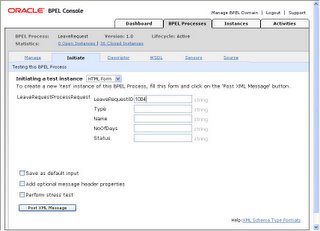
Figure 4, Starting a BPEL process using the Oracle BPEL Console Interface
The BPEL process verifies that the LeaveRequestID exists by using a Database PartnerLink (web service) to select a row from the table and retrieve the contents of that row. This is a direct database query and does not use the PHP web service.
When the BPEL process is started, the BPEL Console displays a screen with options to visually track the flow, audit it using XML, or to debug it.
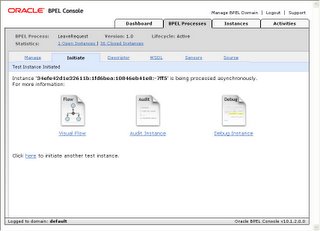
Figure 5, BPEL process monitoring options using the Oracle BPEL Console Interface
The Visual Flow is a very easy way to see what state the process is in, what variables have been passed, what decisions have been made, and what errors may have been generated. In this case, the BPEL process has halted and is waiting for manual intervention at the receiveUpdate... User Task.
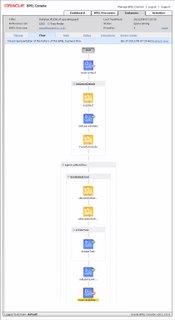
Figure 6, BPEL process waiting for user input using the Oracle BPEL Console Interface
You could write an application yourself which would allow you to interract with the BPEL process (web service), or you can use the Oracle BPEL Worklist. The BPEL Worklist is a supplied web service which enables you to interract with BPEL processes that require user intervention.
The BPEL Worklist shows a list of the User Tasks assigned to a manager. In this case, it is the approval of the employee leave request.
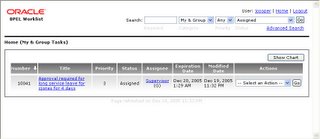
Figure 7, Acquiring a task using the BPEL Worklist Interface
The task must be acquired by the manager before any action or decision can be made on it. Once the task is acquired, the manager can approve, reject or escalate the task to a supervisor.
The escalation heirarchy is managed by JAZN (Oracle's implementation of Java Authentication and Authorization Service (JAAS)) and can be either set up using the JAZN interface, or connected to an LDAP or SSO Server.
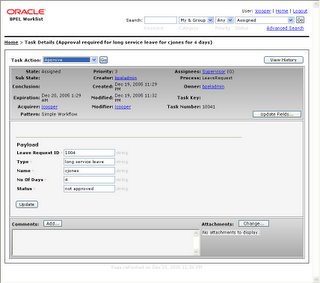
Figure 8, Approving a task using the BPEL Worklist Interface
When the task is approved, the BEPL process receives a message from the Worklist web service and continues processing. The BPEL process continues through its decision making and processing, assigning variables to whatever is required using simple transformations, or XSLT.

Figure 9, BPEL process execution completed using the Oracle BPEL Console Interface
You can click on any of the events in the process to see the SOAP messages being generated For example, the result of invoking the GetLeaveDetails Partner Link generates the following SOAP message.
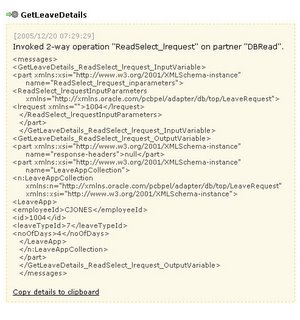
Figure 10, DBRead Database Adapter SOAP messages displayed using the Oracle BPEL Console Interface
The SOAP message displays the input and output variables of the message. You can see that the input variable is lrequest=1004, and the output variables are employeeId=CJONES, id=1004, leaveTypeId=7 and noOfDays=4. This message represents a request to the database Partner Link to retrieve the row with the leave request identifier of 1004.
Now that the BPEL process has finished, and the database updated to remove the leave request with an ID of 1004, logging into the PHP web service shows that the database has been updated. The leave request with an ID of 1004 is no longer displayed.
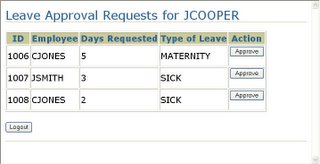
Figure 10, PHP Web Service Interface showing ID 1004 removed from the database
This is a very simple BPEL process and PHP web service, but it shows that you can use BPEL to integrate existing PHP web services with other web services to create new business processes.
For further information on BPEL and using PHP with Oracle, go to the following URLs.
Oracle BPEL Process Manager http://otn.oracle.com/bpel
Service-Oriented Architecture Technology Center http://otn.oracle.com/webservices
PHP Developer Center http://otn.oracle.com/php
Zend Core for Oracle http://www.oracle.com/technology/tech/php/zendcore
Oracle JDeveloper 10g PHP Extension http://www.oracle.com/technology/products/jdev/htdocs/partners/addins/exchange/php